The Llano Uplift is a geologically ancient, low geologic dome that is about 90 miles (140 km) in diameter and located mostly in Llano, Mason, San Saba, Gillespie, and Blanco counties, Texas. It consists of an island-like exposure of Precambrian igneous and metamorphic rocks surrounded by outcrops of Paleozoic and Cretaceous sedimentary strata. At their widest, the exposed Precambrian rocks extend about 65 miles (105 km) westward from the valley of the Colorado River and beneath a broad, gentle topographic basin drained by the Llano River. The subdued topographic basin is underlain by Precambrian rocks and bordered by a discontinuous rim of flat-topped hills. These hills are the dissected edge of the Edwards Plateau, which consist of overlying Cretaceous sedimentary strata. Within this basin and along its margin are down-faulted blocks and erosional remnants of Paleozoic strata which form prominent hills.
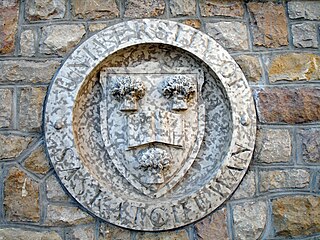
Tyndall Stone is a registered trademark name by Gillis Quarries Ltd. Tyndall Stone is a dolomitic limestone that is quarried from the Selkirk Member of the Ordovician Red River Formation in the vicinity of Garson and Tyndall, Manitoba, Canada. It is a cream-coloured limestone with a pervasive mottling of darker dolomite. The mottling gives the rock a tapestry-like effect, and it is popular for use as a building and ornamental stone.

The Williston Basin is a large intracratonic sedimentary basin in eastern Montana, western North Dakota, South Dakota, southern Saskatchewan, and south-western Manitoba that is known for its rich deposits of petroleum and potash. The basin is a geologic structural basin but not a topographic depression; it is transected by the Missouri River. The oval-shaped depression extends approximately 475 miles (764 km) north-south and 300 miles (480 km) east-west.

The Redknife Formation is a stratigraphical unit of Devonian age in the Western Canadian Sedimentary Basin.
The Baldonnel Formation is a stratigraphical unit of Carnian age in the Western Canadian Sedimentary Basin.
The Exshaw Formation is a stratigraphic unit in the Western Canada Sedimentary Basin. It takes the name from the hamlet of Exshaw, Alberta in the Canadian Rockies, and was first described from outcrops on the banks of Jura Creek north of Exshaw by P.S. Warren in 1937. The formation is of Late Devonian to Early Mississippian age as determined by conodont biostratigraphy, and it straddles the Devonian-Carboniferous boundary.
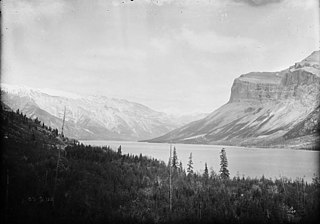
The Palliser Formation is a stratigraphic unit of Late Devonian (Famennian) age in the Western Canada Sedimentary Basin. It is a thick sequence of limestone and dolomitic limestone that is present in the Canadian Rockies and foothills of western Alberta. Tall cliffs formed of the Palliser Formation can be seen throughout Banff and Jasper National Parks.
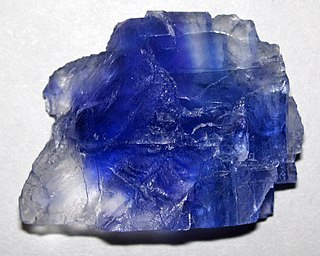
The Elk Point Group is a stratigraphic unit of Early to Middle Devonian age in the Western Canada and Williston sedimentary basins. It underlies a large area that extends from the southern boundary of the Northwest Territories in Canada to North Dakota in the United States. It has been subdivided into numerous formations, number of which host major petroleum and natural gas reservoirs.
The Manitoba Group is a stratigraphical unit of middle to late Devonian age in the Western Canadian Sedimentary Basin.
The Stonewall Formation is a stratigraphical unit of Late Ordovician to Early Silurian age in the Western Canadian Sedimentary Basin.
The Stony Mountain Formation is a stratigraphical unit of Ashgill age in the Western Canadian Sedimentary Basin.
The Liard Formation is a stratigraphic unit of Middle Triassic to Late Triassic age in the Western Canadian Sedimentary Basin that is present in northeastern British Columbia. It takes its name from the Liard River, and was first described from outcrops on the southern bank of that river, near Hell Gate Rapids in the Grand Canyon of the Liard, by E.D. Kindle in 1946.
The Herald Formation is a stratigraphical unit of Late Ordovician age in the Western Canadian Sedimentary Basin.
The Shadow Lake formation is a geological unit that crops out in Southern Ontario, Canada and northern Pennsylvania, United States. The shaly sections act as a caprock to petroleum reservoirs.

The Cairn Formation is a geologic formation of Late Devonian (Frasnian) age in the Western Canada Sedimentary Basin. It was named for the Cairn River near its junction with the Southesk River in Jasper National Park by D.J. McLaren in 1955.
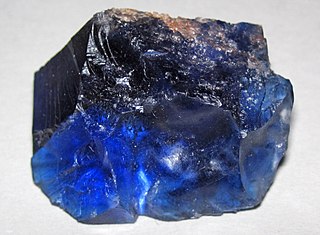
The Prairie Evaporite Formation, also known as the Prairie Formation, is a geologic formation of Middle Devonian (Givetian) age that consists primarily of halite and other evaporite minerals. It is present beneath the plains of northern and eastern Alberta, southern Saskatchewan and southwestern Manitoba in Canada, and it extends into northwestern North Dakota and northeastern Montana in the United States.
The La Loche Formation is a geologic formation of early Middle Devonian (Eifelian) age in the Western Canada Sedimentary Basin. It is present in northeastern Alberta and northwestern Saskatchewan and was first described by A. W. Norris in 1963, who named it for a Roman Catholic Mission at Lac La Loche. Its type section is located at Contact Rapids on the Clearwater River in Saskatchewan, northwest of Lac La Loche. It is not fossiliferous.
Toad Formation, Grayling Formation, and Toad-Grayling Formation are obsolete names for the strata of the Early to Middle Triassic Doig and Montney Formations. They were applied in the foothills and Rocky Mountains of northeastern British Columbia, on the western edge of the Western Canada Sedimentary Basin. Although the names are considered obsolete, their usage persists.
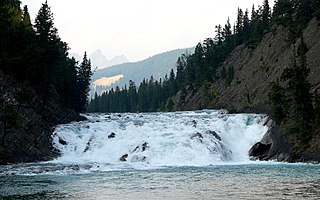
The Spray River Group is a stratigraphic unit of Triassic age. It is present on the western edge of the Western Canada Sedimentary Basin in the foothills and Rocky Mountains of western Alberta. It was originally described as the Spray River Formation by E.M. Kindle in 1924 and was later raised to group status. Its type section is located in the Spray River gorge at the southern end of Sulphur Mountain.
The Bertie Group or Bertie Limestone, also referred to as the Bertie Dolomite and the Bertie Formation, is an upper Silurian geologic group and Lagerstätte in southern Ontario, Canada, and western New York State, United States. Details of the type locality and of stratigraphic nomenclature for this unit as used by the U.S. Geological Survey are available on-line at the National Geologic Map Database. The formation comprises dolomites, limestones and shales and reaches a thickness of 495 feet (151 m) in the subsurface, while in outcrop the group can be 60 feet (18 m) thick.






